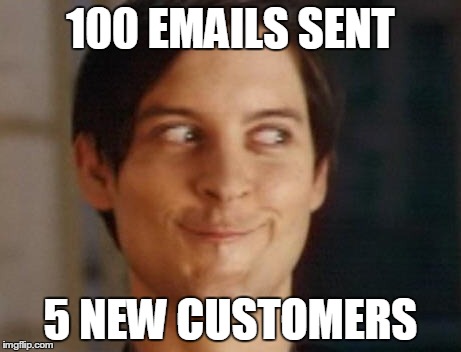Email marketing is a form of outbound communication to prospects or customers to achieve a clear objective such as encourage purchase, increase awareness, launch a product, gather leads etc. Email marketing is best used for personalized communication with existing customers on a house list but can also be successful for mailing prospects on a rented or co-branded list, which has been opted-into.
Today, with an estimated 3.9 million active email users globally, email marketing gives significant competition to more popular social media channels.
However, many brands find it challenging to grow revenue from email marketing because they typically either adopt a mass email approach or use a list that has not been opted into. We are here to save the day with some tips to help harness the more niche capabilities of email marketing and automation to drive revenue.
1. Use website analytics to build your email marketing list
Apply insights from your website analytics and predictive intelligence, which assess a combination of user profile, interests and behaviours to suggest customized offers and content to your customer segments via email. Well-leveraged analytics can help you understand each website visitor’s user behaviour, purchase history and data on cart abandonment so that you can use tailor targeted emails to them to increase customer acquisition and retention.
For example: an automobile manufacturer offers three variations of a particular model — sport, luxury, and limited edition. The digital marketing team can monitor the likelihood that a website visitor will be purchasing either of them, using predictive models based on how they browse the website. Insights gathered from analytics can guide decision making around which content will resonate with the prospect’s personality, purpose and even their purse.
2. Provide recipients with gated content
Gated content is any content that web visitors can only access after providing their email address. This approach ensures that your mailing list consists of prospects and clients, who have an active interest in your brand i.e. they have opted in.
Imagine a prospective student signs up to see a webinar on the course structure of a program they are interested in at a university they are considering. Most likely this sign up will require the prospect to use their email address. By including a simple opt-in option during the sign-up process, the school can then add the prospect to their mailing list and continue personalized communication with them to guide them along their decision-making process.
3. Co-branded emails
Brands with a wide product mix such FMCGs or insurance companies will find co-branded emails rewarding. The recipient usually receives an email from a brand whose email list they have opted into and the email introduces the other brand and communicates a relevant message with a clear call-to-action. Although, this can be considered a form of cold emailing, it is a warmer approach because the secondary brand is able to leverage the existing relationship between the primary brand and the recipient, which ultimately makes the recipient more responsive.
Brands applying the co-branded email tactic usually acknowledge the partner brand in the email copy, creative or merge the two logos to add some credibility to content.
Email marketing, just like the digital channels, is constantly evolving and marketers need to stay up to date with new trends so they can fully harness its benefits to drive revenue and stay top of mind. We can help you navigate this channel effectively. Just say the word!
With over 4 years in account management, George has learnt the art of relationship management in sustaining long-term agency-client relationships. He is constantly working with team members to identify new opportunities to enable client business growth.

As a Newbie, I am permanently exploring online for articles that can benefit me. Thank you
Having read this I believed it was rather informative. I appreciate you finding the time and energy to put this information together. I once again find myself spending a lot of time both reading and posting comments. But so what, it was still worth it! Yolanda Rowan Hirasuna
Attractive component of content. I simply stumbled upon your website and in accession capital to assert that I acquire actually loved account your weblog posts. Anyway I will be subscribing in your augment or even I achievement you get entry to constantly rapidly.| Mariquilla Darb Kehoe